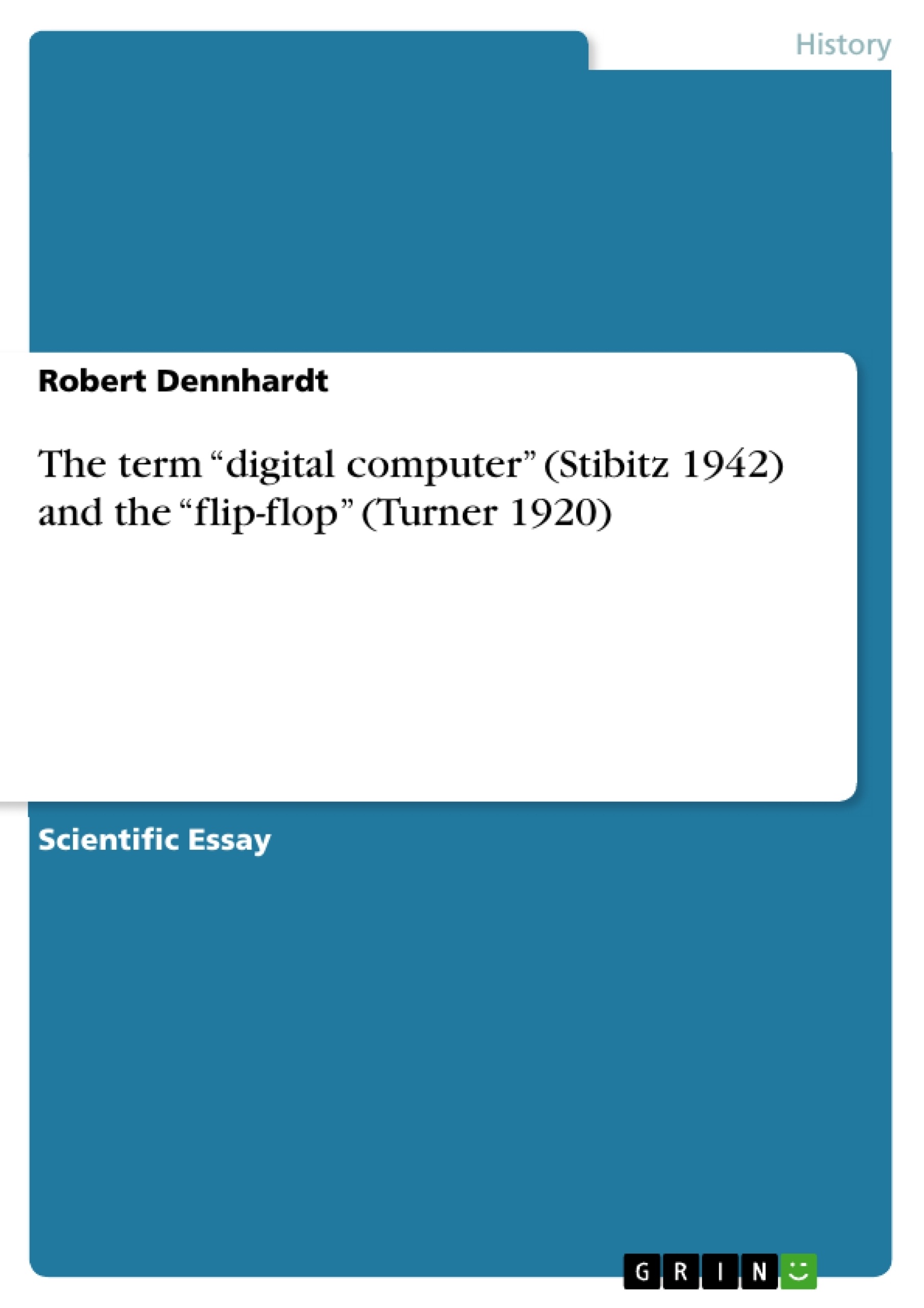Why do the terms digital and therefore digital computer seem to be so problematic? In all literature dealing with computer history, there is a certain indifference concerning the differently scaled function descriptions and terminologies of individual parts or the entire computer and its analogue, discreet or digital properties. “Digital” and “digital computer” was first used by George Robert Stibitz in 1942.” (Ceruzzi/Aspray 1990) So far, no author was able to state a direct source. In his closing report Report on electronic predictors for anti-aircraft fire control from 1942 about a computer-assisted anti-aircraft system Stibitz' pointed out the fundamental advantages of merely having to program and compute two discreet voltage levels.
There is a reference to this technical and historical gap, for example, in the first volume of the Encyclopedia of Computers and Computer History by Raul Rojas from 2001. It should however be possible to find at least a circuit directly succeeding the “trigger relay” from 1919 or a first application. Indeed, an early mention of the onomatopoetic name “flip-flop” can be found in A. T. Starr’s essay “A Trigger Peak Voltmeter Using »Hard« Valves“ from 1935. In April 1920, around six months after the trigger relay essay was published by Eccles and Jordan, Laurence Beddome Turner presented his so-called “Kallirotron, an Aperiodic Negative-Resistance Triode Combination”.
Inhaltsverzeichnis (Table of Contents)
- The Genesis of the Term “Digital Computer”
Zielsetzung und Themenschwerpunkte (Objectives and Key Themes)
This article analyzes the origins and genesis of the terms “digital” and “digital computer.” It explores the historical context of the development of these terms and examines how the concept of “digital” evolved in relation to the development of electronic computing devices.
- The historical development of the term "digital" in relation to computing.
- The influence of early computer pioneers like Atanasoff, Berry, and Stibitz.
- The relationship between analog and digital computing.
- The advantages of using binary logic and the concept of "binary places."
- The emergence of the “direct system” and the “impulse system” in computer design.
Zusammenfassung der Kapitel (Chapter Summaries)
The article explores the origins and evolution of the term “digital computer” through the analysis of key figures and events. It focuses on the work of George Stibitz, a prominent figure in early computer development, and his contributions to the development of both the “direct system” and the “impulse system”. It also discusses the advantages of using binary logic and the concept of "binary places" in computing.
Schlüsselwörter (Keywords)
The article focuses on the development of the term “digital computer” and its associated concepts, including “analog,” “digital,” “binary places,” “direct system,” and “impulse system.” It also delves into the role of key figures such as Stibitz, Atanasoff, and Berry in the advancement of computing technology.
- Quote paper
- Dr. phil. Robert Dennhardt (Author), 2008, The term “digital computer” (Stibitz 1942) and the “flip-flop” (Turner 1920), Munich, GRIN Verlag, https://www.grin.com/document/301420




